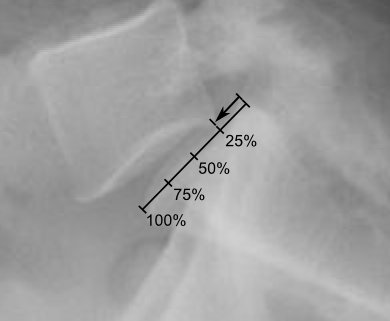
Lumbar Spondylolysis
Overview
Lumbar Spondylolysis, more commonly known just as Spondylolysis, is a condition that affects the spine, primarily within the lower back (Lumbar region). It results from a crack or stress fracture in one of the vertebra, often caused by repetitive strain or trauma. Globally, it’s reported that up to 6% of the population may have Spondylolysis, although many may be asymptomatic and unaware of their condition.
Types
Generally, Spondylolysis is a specific term for a single condition, making subtypes uncommon. But differences can exist based on which vertebra is affected or on the cause of the condition, i.e., whether it occurred due to congenital factors, overuse, or acute trauma.
Causes
Spondylolysis can result from a variety of factors:
-
- Overuse: Frequent stress to the lower back, common in athletes (especially young ones) who perform activities with heavy lifting or twisting, can lead to the development of stress fractures.
-
- Genetic Factors: Some people may genetically have a thinner section of bone connecting the facet joints, making them more prone to fractures.
-
- Acute Trauma: A direct injury to the lower back can also cause Spondylolysis in some individuals.
Symptoms
Not everyone with Spondylolysis will experience symptoms. For those who do, the most common symptom is pain in the lower back, aggravated by physical activity and subsiding with rest. Other less common symptoms could include:
-
- Muscle stiffness or tightness in the lower back
-
- Pain spreading down to the buttocks or legs
-
- Numbness or tingling in the lower body
Diagnosis
The diagnosis of lumbar spondylolysis typically begins with a detailed medical history and physical examination. The doctor might ask about the nature of the pain, what aggravates and relieves it, and any history of injuries. Diagnostic tests that might be employed include:
-
- X-ray: This basic imaging tool can be used initially to look for fractures in the bones.
-
- CT scan: Provides more detailed images which can detect Spondylolysis not visible with an X-ray.
-
- MRI: An MRI can help pinpoint damaged nerves and assess the degree of damage.
Treatment Options
The treatment for Spondylolysis typically includes both conservative and surgical options. Conservative treatments include:
-
- Physical therapy to strengthen the muscles that support your back
-
- Non-steroidal anti-inflammatory drugs (NSAIDs) for pain relief
-
- Back bracing to limit mobility and allow the fractures to heal
If these treatments fail and pain persists, surgery may be suggested. Surgical treatment generally involves fusing the bones together to prevent them from moving and causing pain.
Living With Lumbar Spondylolysis
Having Spondylolysis can be challenging, but there are ways to manage the condition:
-
- Lifestyle Changes: Regularly engaging in low-impact exercise and maintaining a healthy diet can help manage the symptoms.
-
- Medication Management: Regularly taking prescribed medication and follow-ups with the doctor can ensure that pain is kept under control.
-
- Coping Strategies: Mind-body techniques such as mindfulness and meditation can help manage the stress and anxiety associated with persistent pain.
When to Seek Help
Despite treatment, if your lower back pain becomes severe, continuous, or is associated with symptoms like weight loss, fever, or numbness in the legs, it’s crucial to seek immediate medical attention. These could be signs of more severe underlying conditions, warranting prompt evaluation. Always remember, early diagnosis and proper treatment can prevent complications and help maintain overall health.
